Dear friends,
And so we embarked on a truly marvellous adventure with Quark Expeditions on the M/V Ocean Endeavour, captained by Dmytro Ashanin, with a crew of some 100 to cater for all our needs while on-board and an expedition team of 29 to provide pertinent information and guidance throughout the trip. Although the ship can house some 400 passengers, we were just 199 as under the Antarctic regulations, there can only be 100 people onshore in any one place at any one time.
On arrival, dwarfed by the ship, we climbed up the gangway, were welcomed by members of the team, shown to our quite spacious cabin and invited to partake of afternoon tea before we sailed.
We did indeed feel welcomed, and when I saw that …
… there was not only whipped but also clotted cream for the scones, I knew we were going to be well catered for by the chefs.
After a safety briefing and lifeboat drill, we were up on deck to witness our departure.
A port authority ensures our safe departure from the wharf.
Moving away from the pier and Ushuaia, and we are off.
Goodbye for now Ushuaia.
The weather closing in behind us as we set sail along the Beagle Channel.
My cousin Sarah and I are pretty excited to be finally off on adventure planned for more than a year.
And yes, we paid good attention to the safety briefing too!
Although not really superstitious, I thought it an excellent omen that we were escorted out of the channel by a rainbow.
From the back deck, we could see that other vessels were following us down the channel …
… one, two, three of them. Actually, while we were on our expedition we saw few other ships, so they most likely had a different itinerary. Some cruises start with South Georgia, or the Falkland Islands, others head straight for the Antarctic Peninsula.
Our first evening aboard we dined well and then were kitted out in our bright yellow parkas with black inner jackets and solid, lined rubber boots which we stored in our lockers in the Mud Room. For those who were worried about seasickness, the doctor was available for counsel, but I thought I’d be fine – and I was.
Another nicely carved welcome at the entrance to the Polaris Restaurant.
From the get-go, the Expedition Team kept us informed on all aspects of our voyage, the planned route, the sea and temperature conditions, as well as presenting excellent lectures on many subjects related to the history and geography, the flora and fauna and on-going research. Topics the first days included ‘The Early Explorers of Antarctica’, ‘Birds of the Drake Passage’, and Cetaceans of the Southern Seas, and the more practical issues such as the mandatory biosecurity procedures and zodiac safety briefings.
Our knowledgable ornithologist Carrie telling us of her work to date and presenting the Birds of the Drake Passage.
The first two days, we ploughed across the Drake Passage, and happily for us, although it was not the ‘Drake Lake’ it was close to it and we got our sea legs quite quickly, climbing up and down through the decks and spending a lot of time outside breathing in the fresh, cold air and watching for birds.
Birds, mainly petrels, but the occasional albatross as well, but so hard to photograph!
From Ushuaia we crossed the Drake Passage to the South Shetland Islands – a quick look at the map:
Ushuaia to the South Shetland Islands, some 1,000 kms and dropping latitude from 54 to 62 degrees south.
After two nights and a full day crossing the passage, we were expecting to reach the South Shetland Islands the following afternoon, so imagine our surprise and utter to delight to pull back the curtain over our porthole early the next morning and see a great white island right there. We heard later that the Captain had been out-running a storm sweeping down from the Andes and managed to do just that, making us a half-day ahead of the schedule.
First glimpse of the South Shetlands – the view from our cabin on the 7th deck.
Heading towards the islands and excited to be anticipating our first zodiac tours and landings.
Getting closer …
… and closer.
A couple of the expedition team head out to check on the best landing spots and tracks before we are allowed to land.
Up on deck, the photographers are out in force to get the first pix of Fort Point, our first landing of the day. Fort Point is an 85-metre high rocky point that forms the S.E. extremity of Greenwich Island of the South Shetland Group.
The team back from checking out the aptly named Fort Point and the penguin colony there.
My first landing and plenty of penguins. We are cautioned to stay 5 metres away but they often have other ideas
and if you sit still, they often wander past quite close and unconcerned.
A few hundred here, mostly gentoo but some chinstrap also, the colony right under the shelter of this huge rock.
A gentoo penguin wanders up from the sea, easily identifiable with its flamboyant red-orange beak, white-feather caps,
and peach-coloured feet, and standing out against its rock-strewn Antarctic habitat.
Parents and chicks, already getting rather large and very fluffy, feed, preen and sleep by the water’s edge.
Other penguins have made their nests higher up towards the mountains.
From Fort Point looking across the twisted face of a glacier towards Hardy Cove, to be the second landing of the day.
These three curious seals dwarf the penguins, although the Gentoo are the third largest of Antarctica’s penguins being smaller than the Emperor and King penguins found further south in Antarctica.
Thought this was foam by the rocks, but it is sea ice gently swaying with the waves. Such glorious colours.
A gentoo wanders past a chinstrap penguin, so named for its ‘black helmet with chinstrap’. They may be smaller than the gentoo only about 68cm tall and weighing about 4.5 kg but they can swim up to 80 km off-shore in search of food.
Seals and penguins lying snugly in the warmth of the afternoon sun.
Another view of a part of the colony at Fort Point, some of the chicks nearly as big as their parents but still with baby grey fluff.
Gentoo parents, often forming long-lasting bonds, are highly nurturing. At breeding time, both parents build a circular nest of stones, grass, moss, and feathers. The mother then lays two spherical, white eggs, which both parents take turns incubating for more than a month. Chicks remain in the nest for up to a month, the parents alternating foraging and brooding duties.
These two chicks look well-fed and now sleeping. Adults spend the entire day hunting, usually close to shore, but occasionally ranging as far as 20 km out. When pursuing prey, (fish, squid, and krill) they can remain below for up to seven minutes and dive as deep as 200 metres. Like all penguins, they are awkward on land, but graceful underwater. They have streamlined bodies and strong, paddle-shaped flippers that propel them up to 22 miles an hour, faster than any other diving bird.
Just hanging out at the shore, and a few in the water too.
Our second landing for the day was at Hardy Cove, which was named after Admiral Sir Thomas Hardy, the Flag Captain in HMS Victory at the Battle of Trafalgar and First Sea Lord of the British Navy from 1830-1834.
Of the 199 passengers onboard our vessel, half had been here first and then we swapped, the zodiacs zipping from one site to the other, 10 to a boat. Other days, one group would tour through bays and icebergs by zodiac while the others were at a landing site. This is the way we could respect the 100 person limit at any one place, at any one time.
The terminal moraine of the glacier at Hardy Cove, boulders and stones smooth and rounded by ice-action, with Fort Point visible in the background. It was seriously difficult to walk here but with the views and a few penguins too, it was a lovely place to find a quiet spot and just take in the magnificent surroundings.
All on its own, this gentoo was steadily making its way to some destination he had set its sights on.
Quite ungainly on land, but hopping and stepping it can still get along at a decent rate.
Another one, is snuggled down into the rocks, warmed by the afternoon sun.
The crevassed face of the glacier reaching right down to the sea and stretching for more than a kilometre.
Enjoying the warmth of my polar expedition jacket and with the obligatory life jacket over the top. You will notice behind me that not everything was white and grey, but through the summer season with many hours of sunlight and a degree of warmth, mosses and some grasses push their way up through the stones and the thin layer of soil and sand.
The water of Hardy Cove a lovely blue-green from the ice-melt water and one lone explorer enjoying some quiet time,
or maybe taking a selfie?
And after two great landings, it was back to the ship by Zodiac, accompanied by a snowy petrel above.
In my next blog, we travel further south to reach the Antarctic Peninsula and encounter whales and icebergs, a shipwreck and some stunning scenery, late in the evening we cruise through the Neumayer Channel.
Until then, dream about your own trip to see such a wonderful part of our planet.
Regards to all,
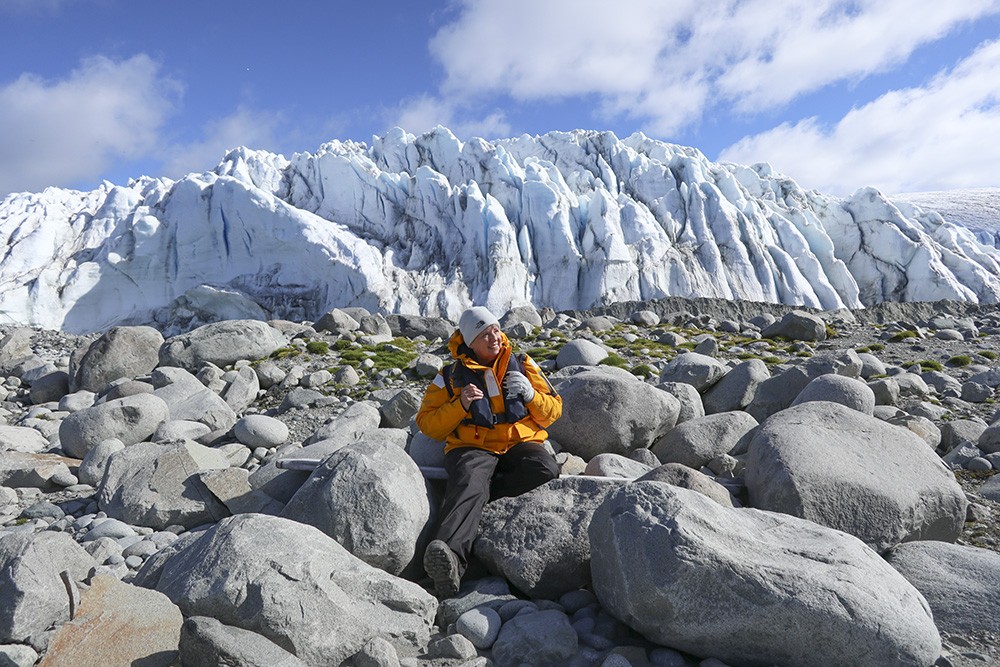
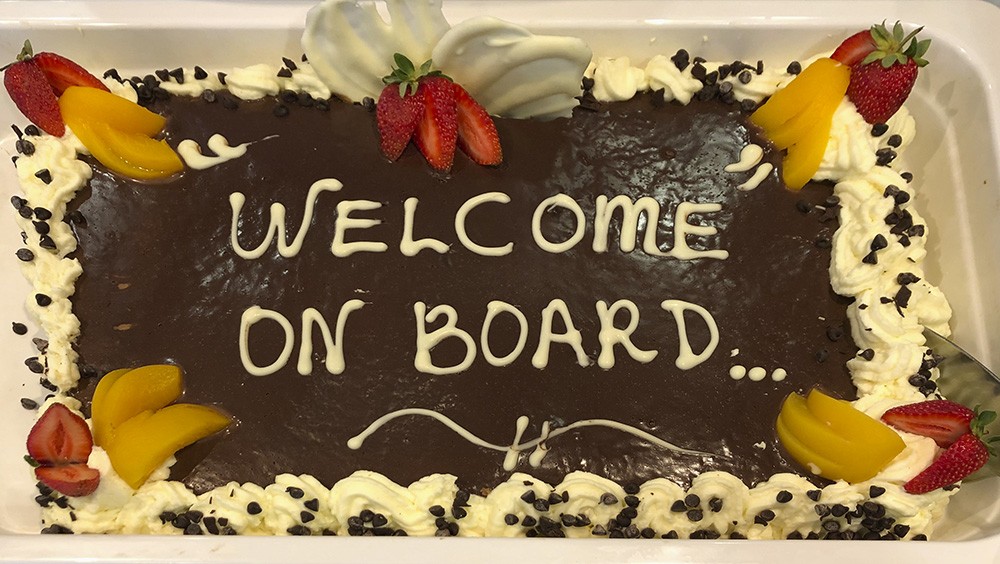
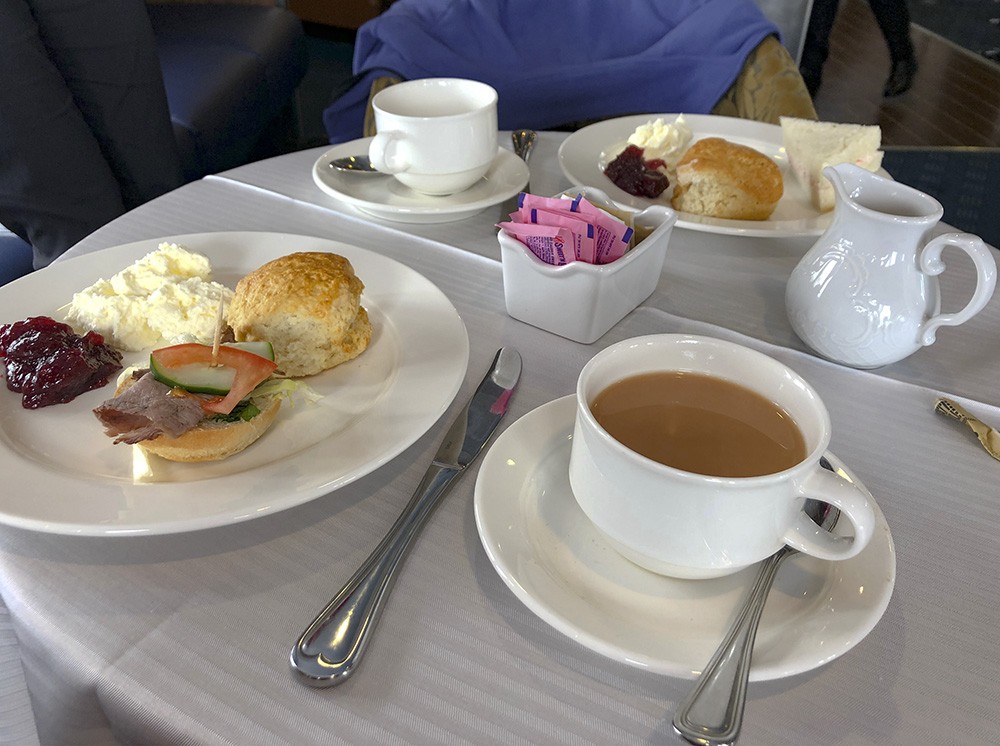
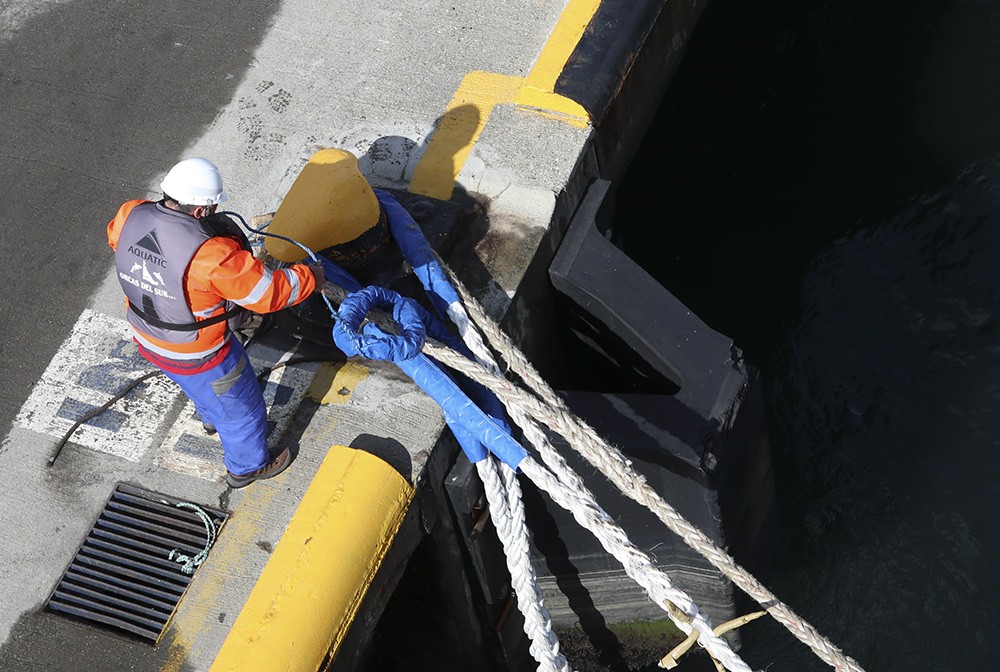
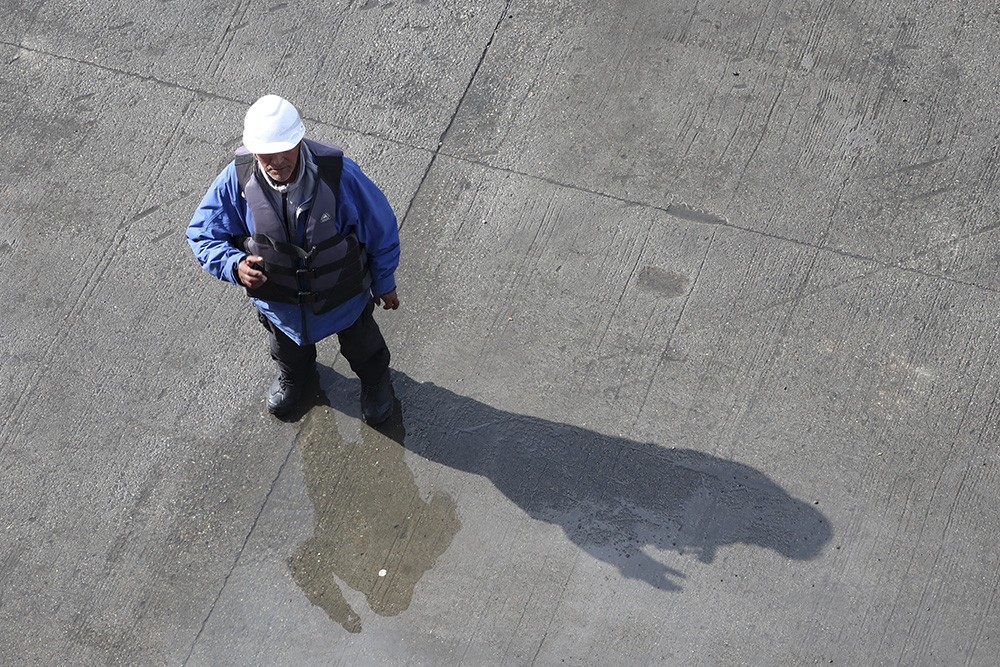
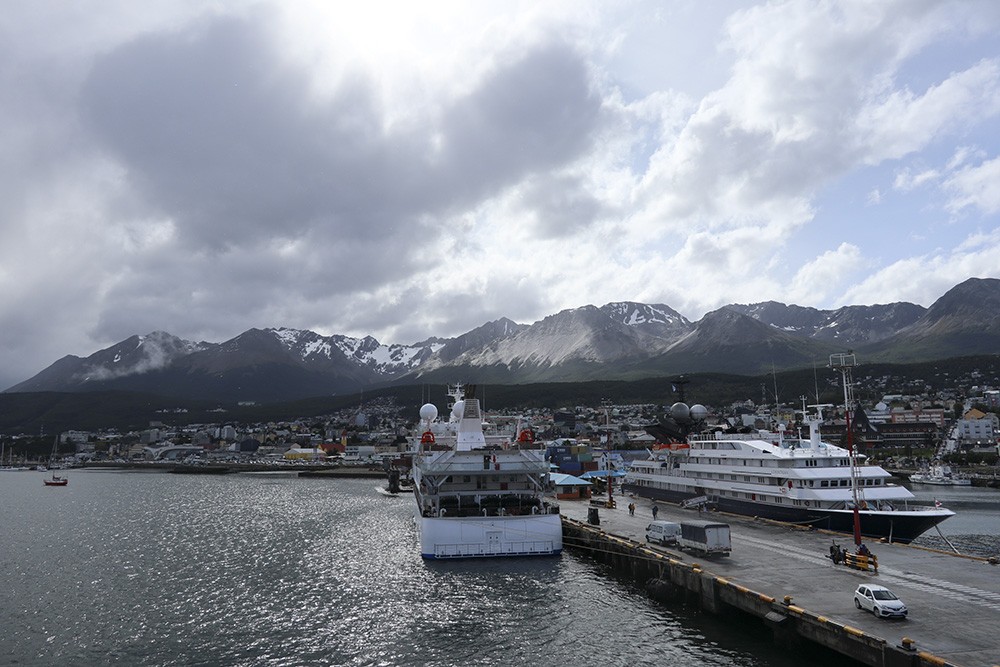
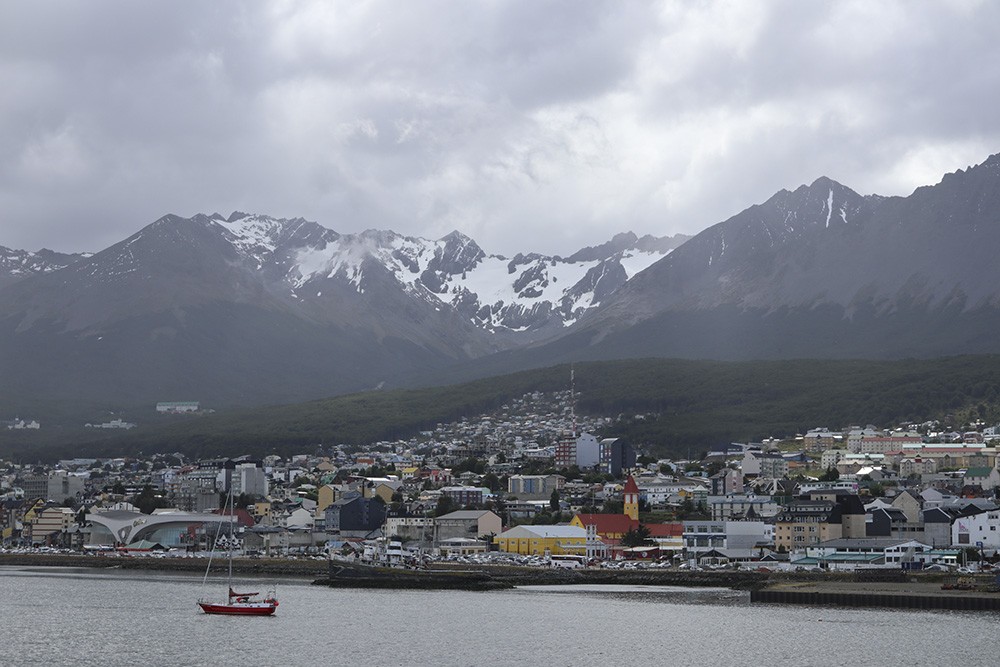
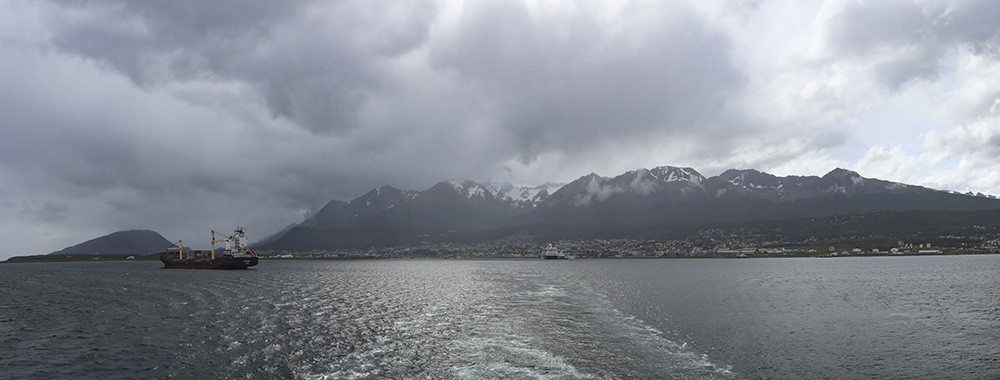
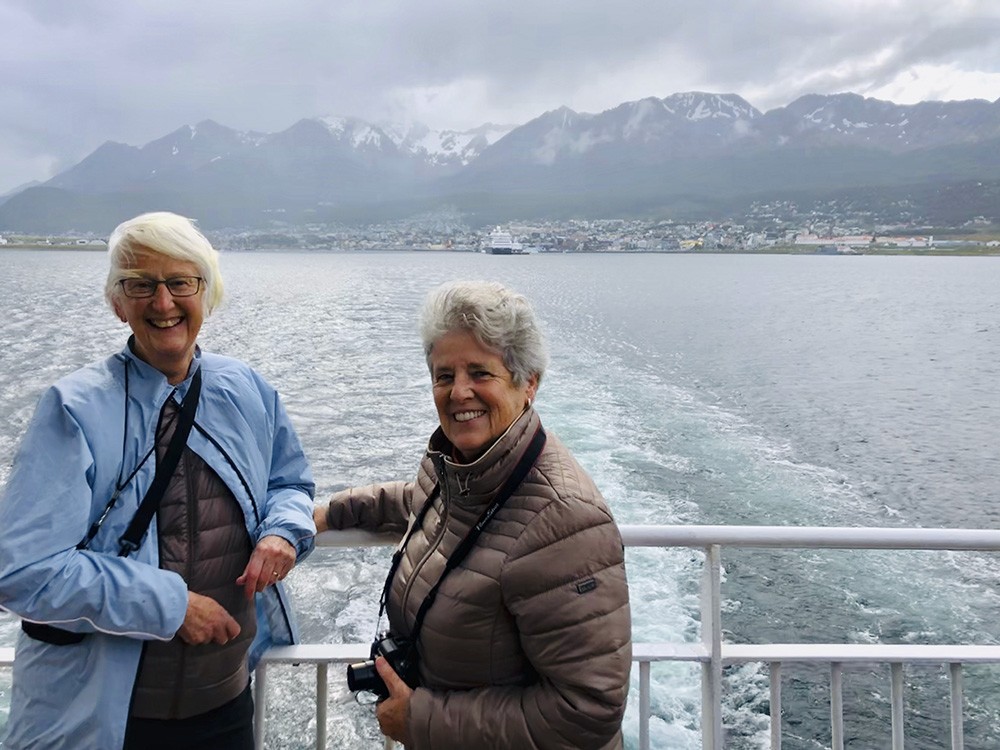
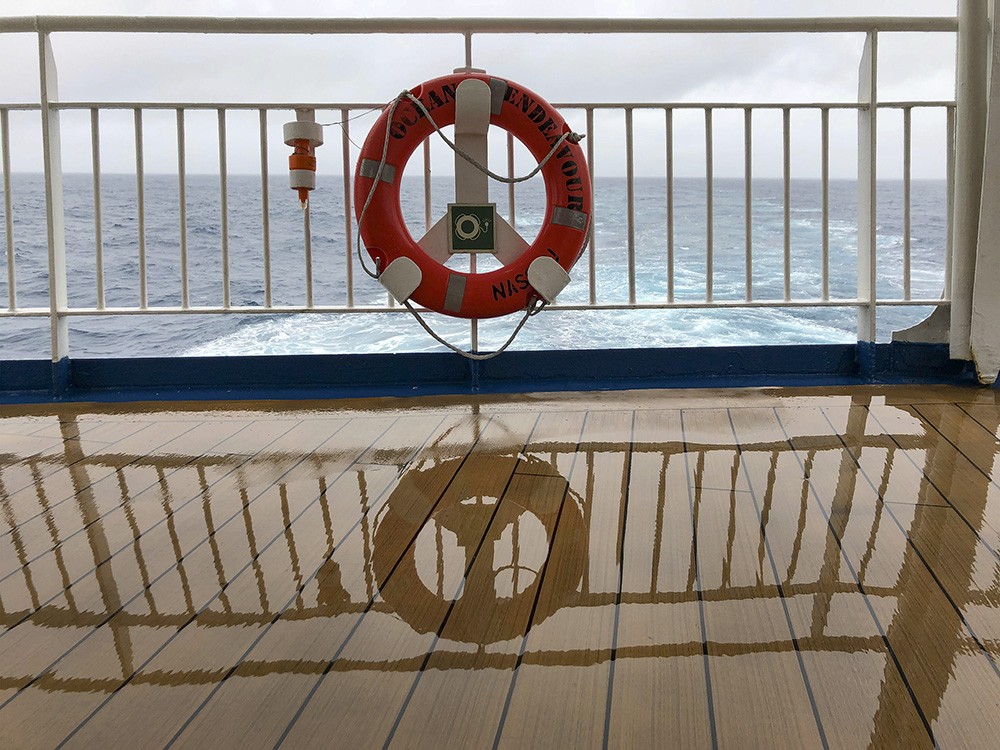
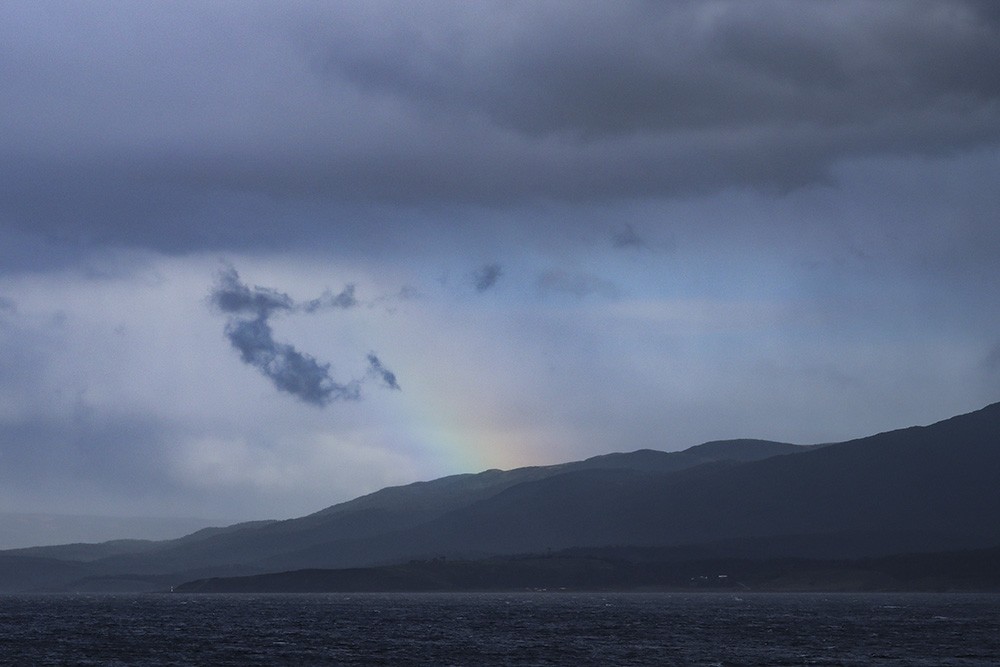
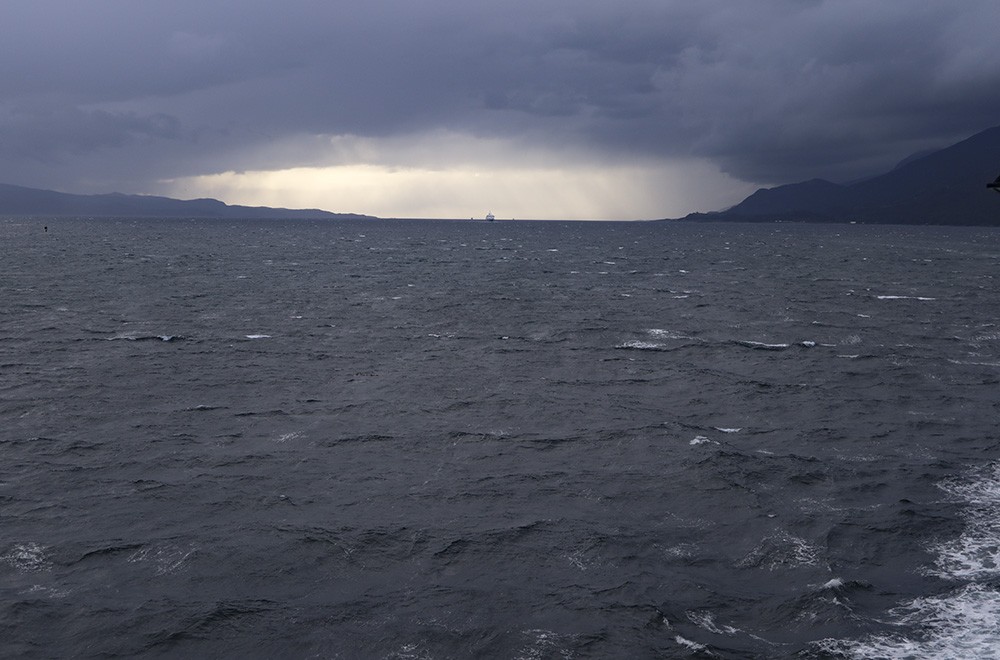
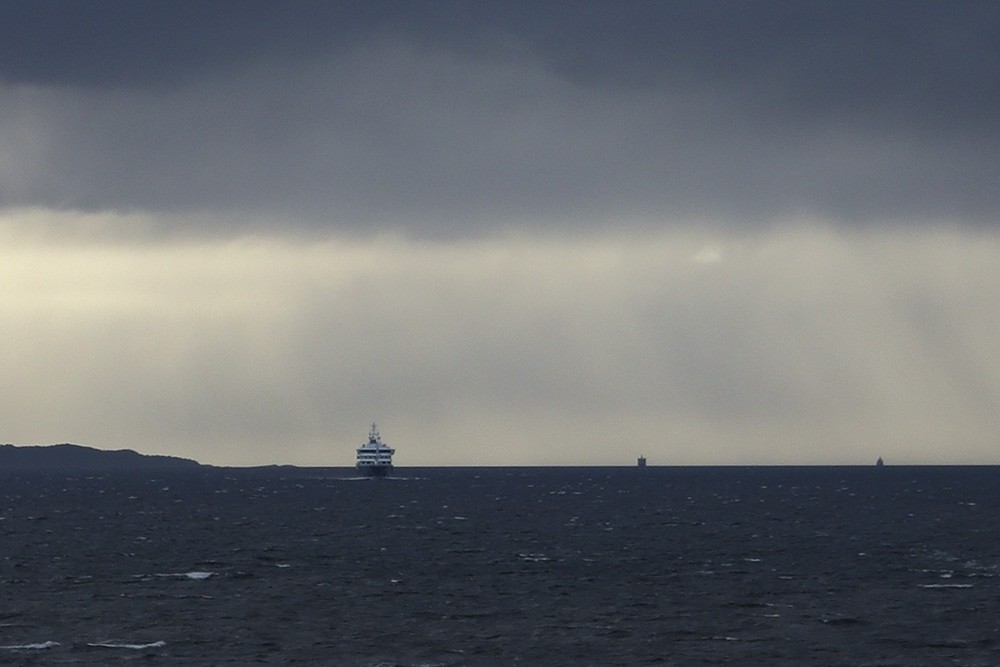
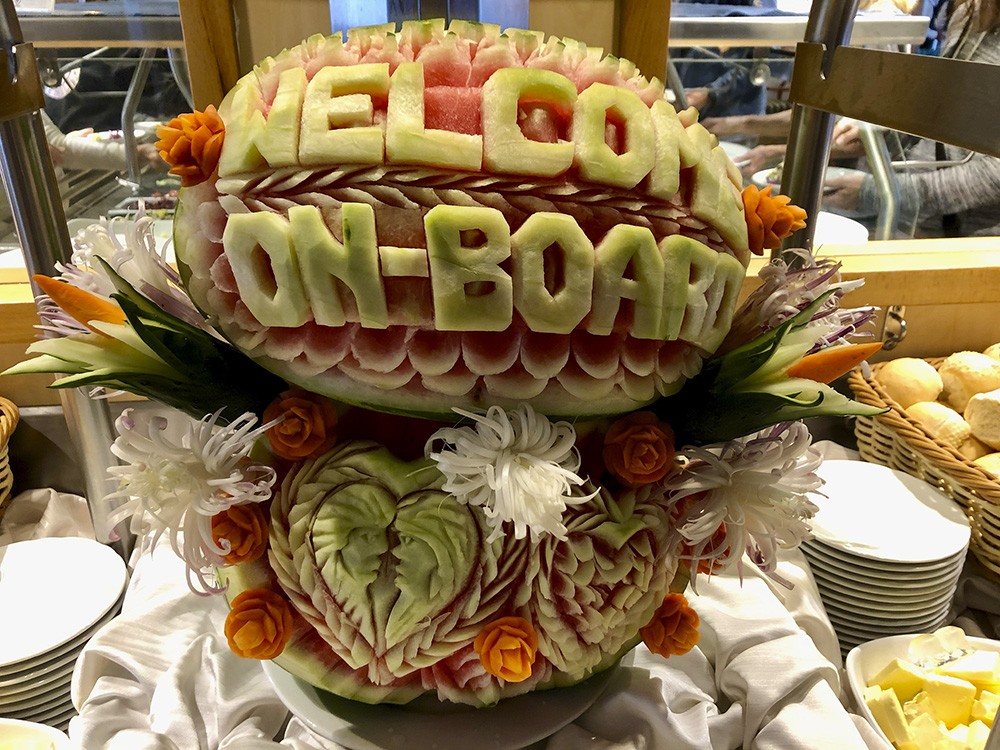
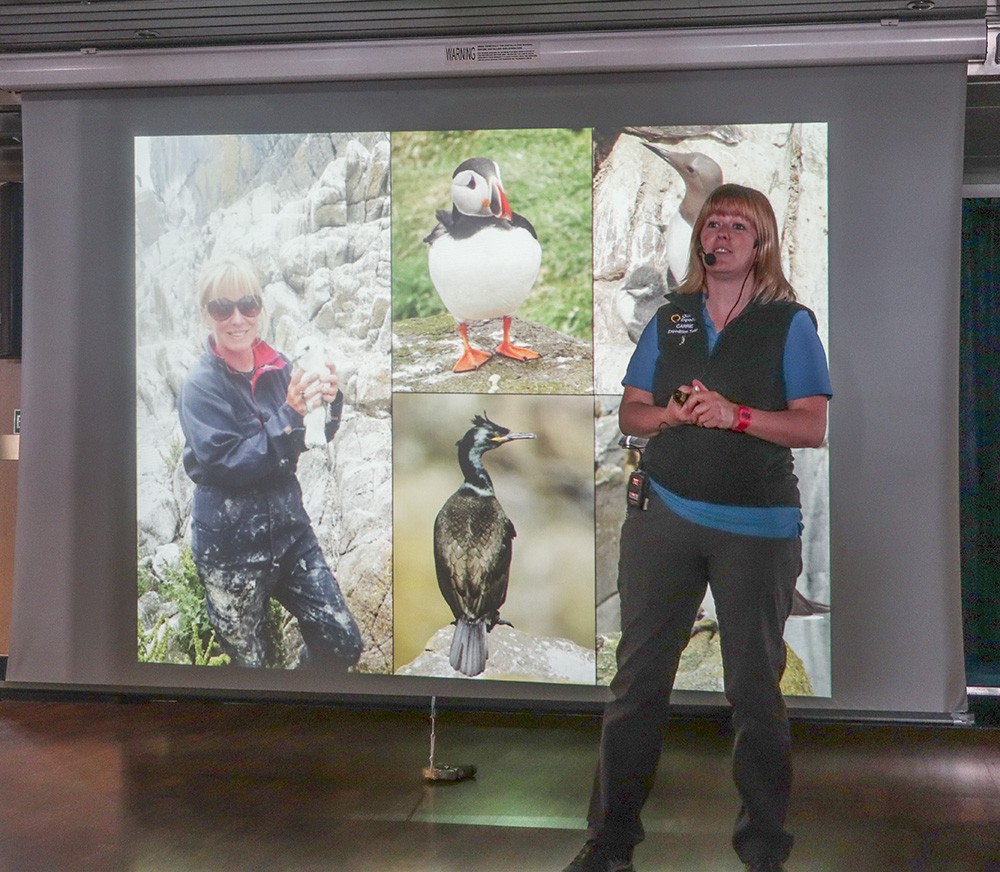
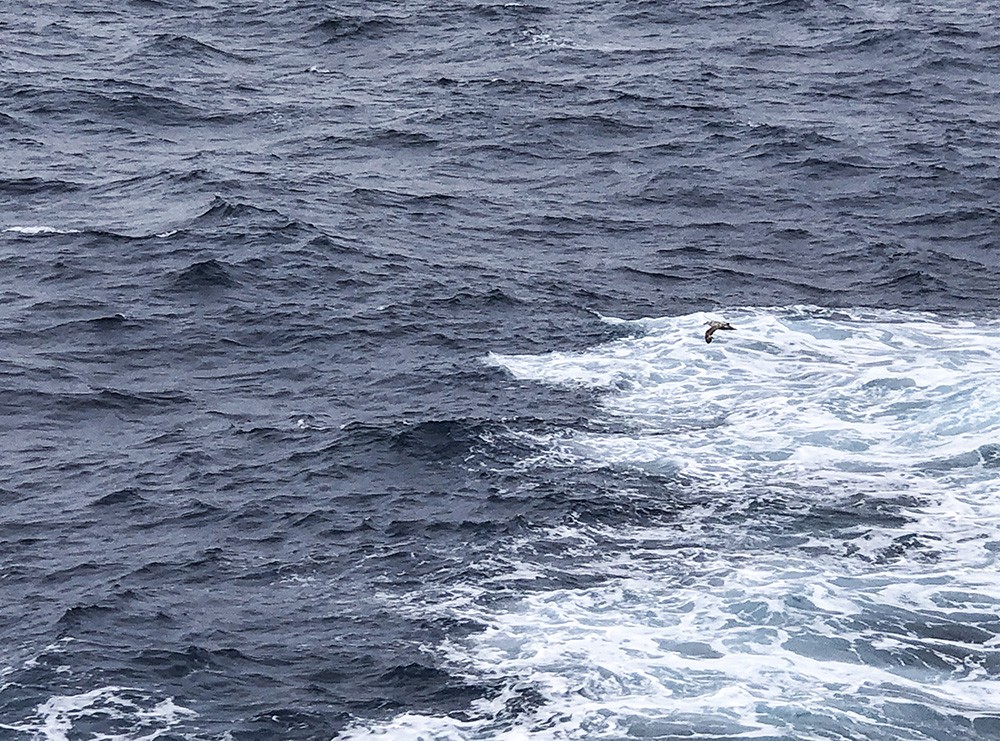
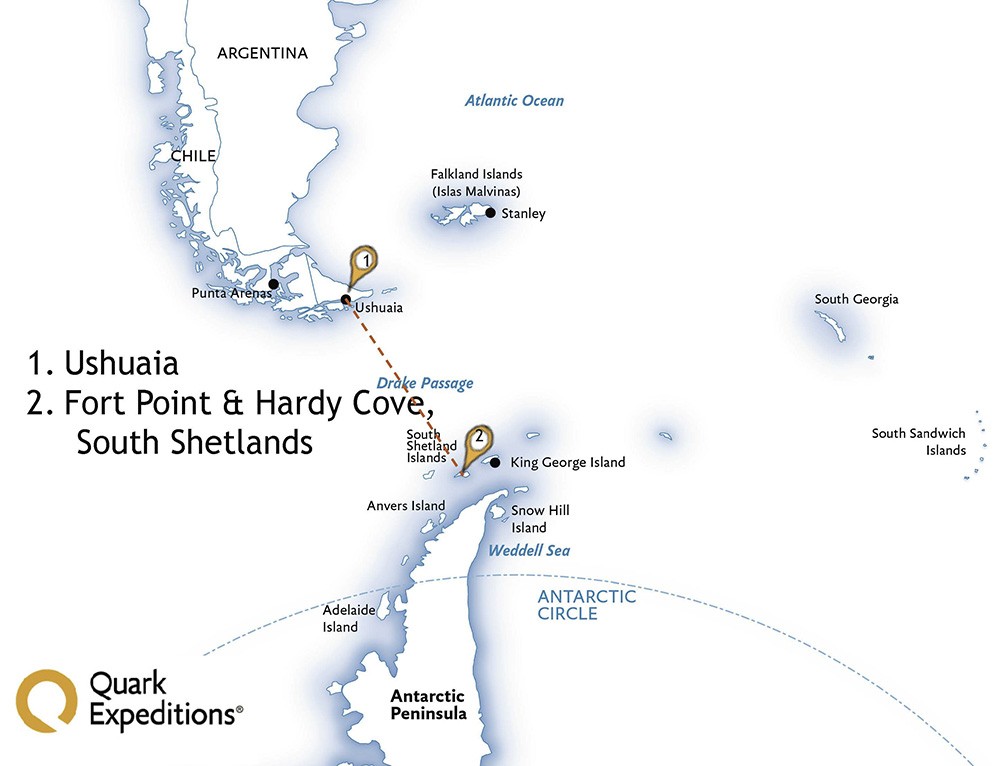
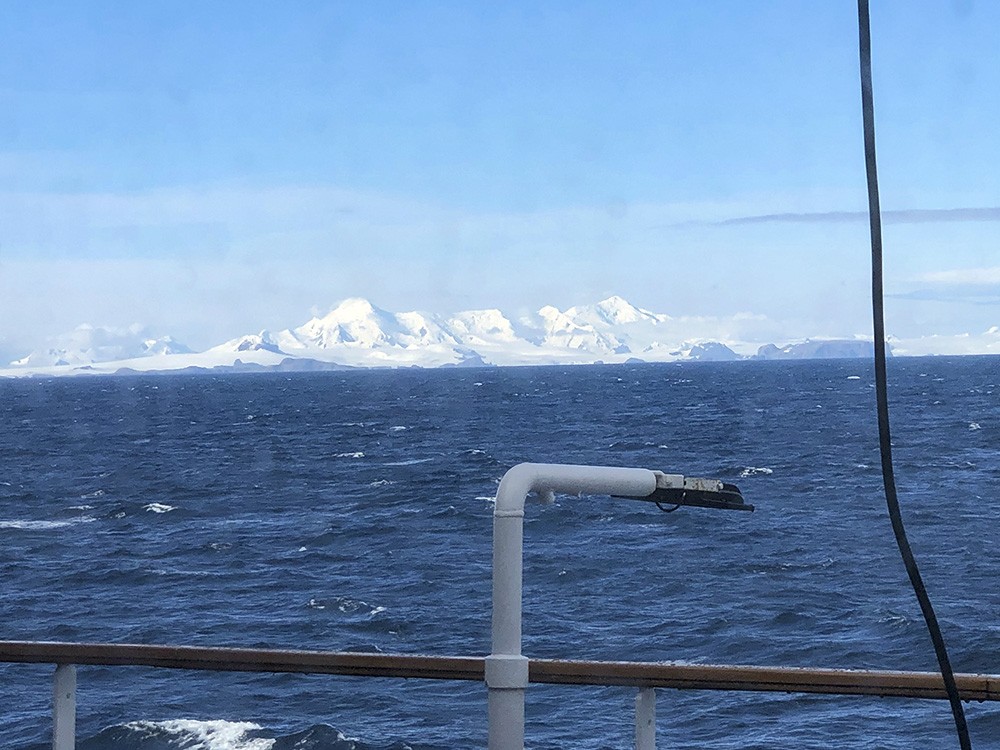
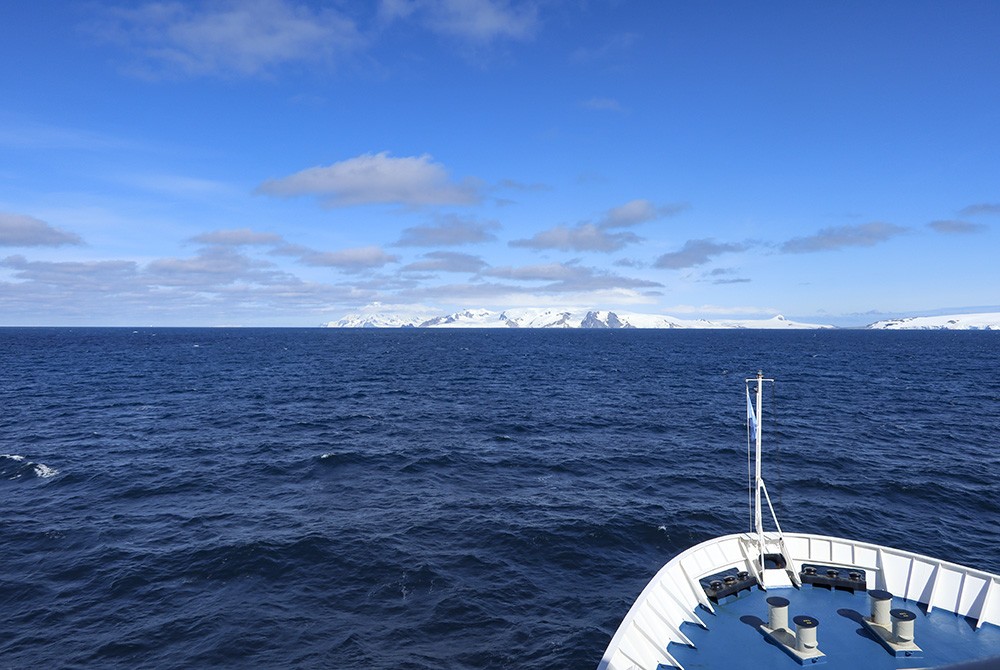
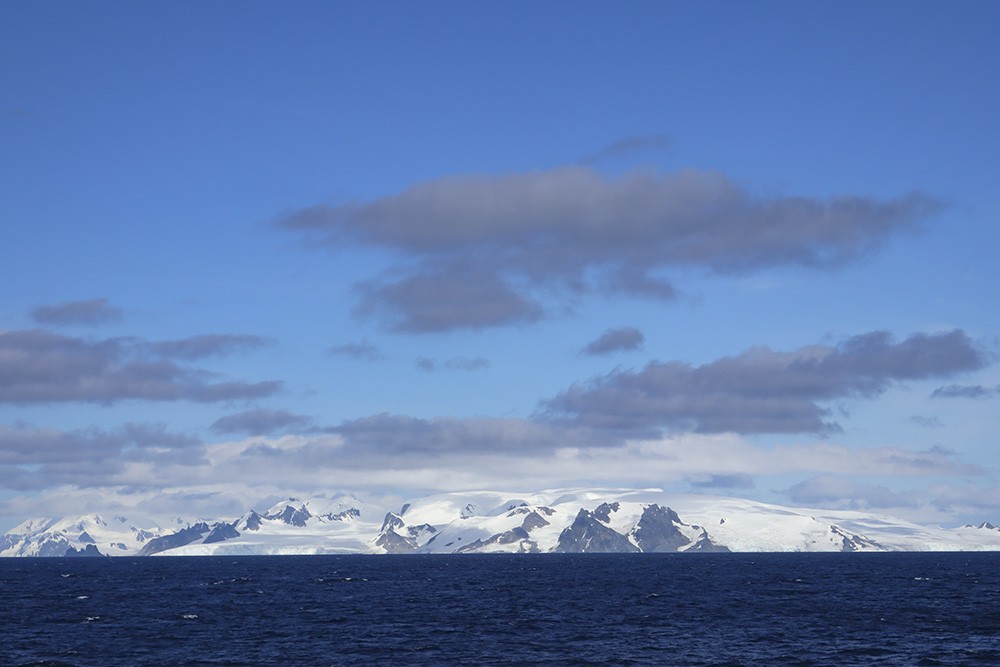
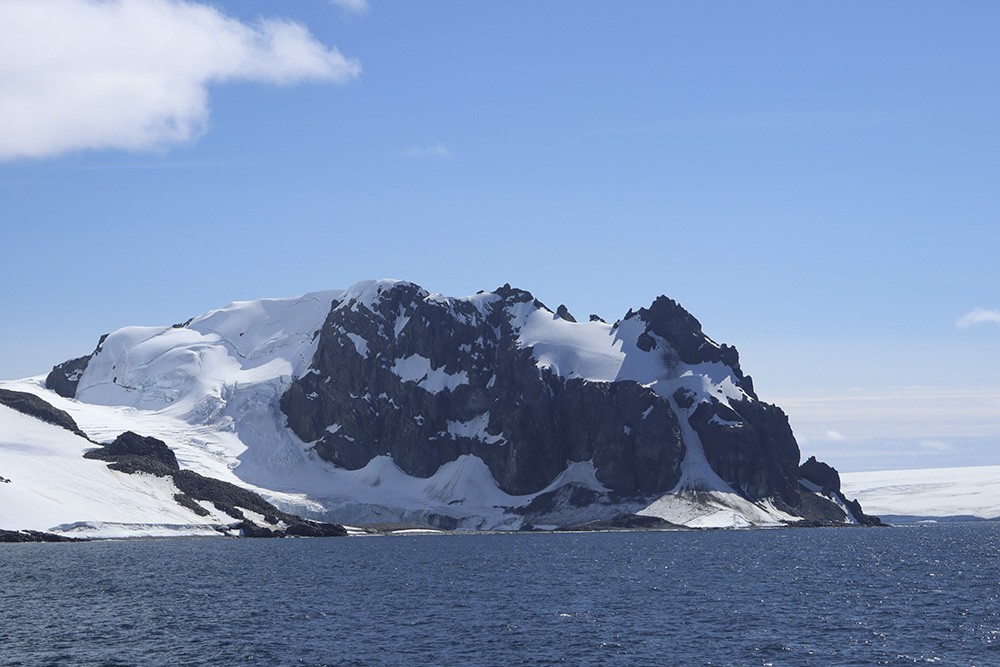
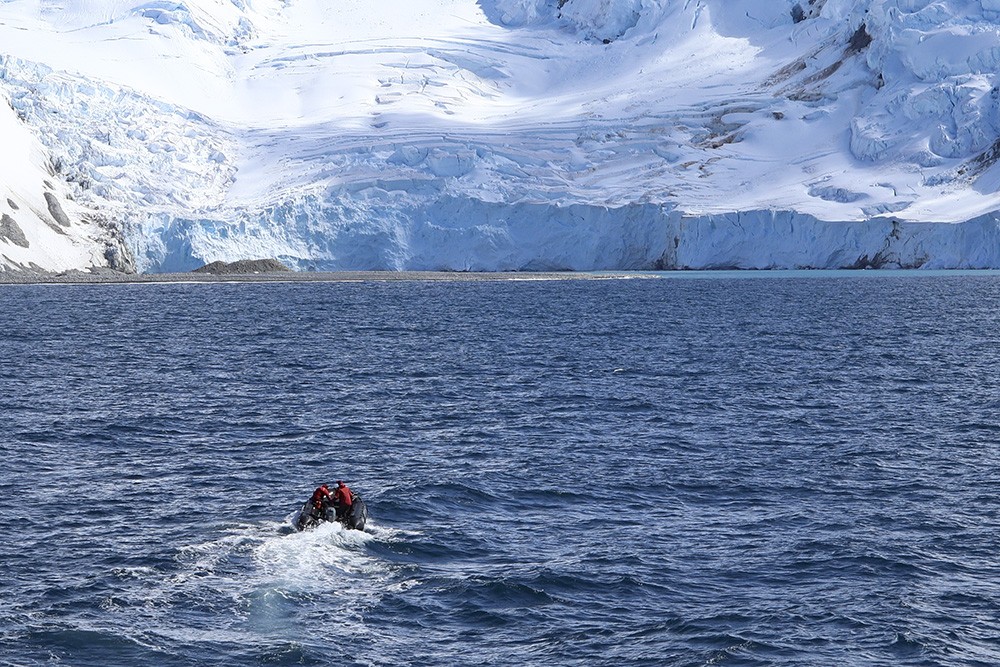
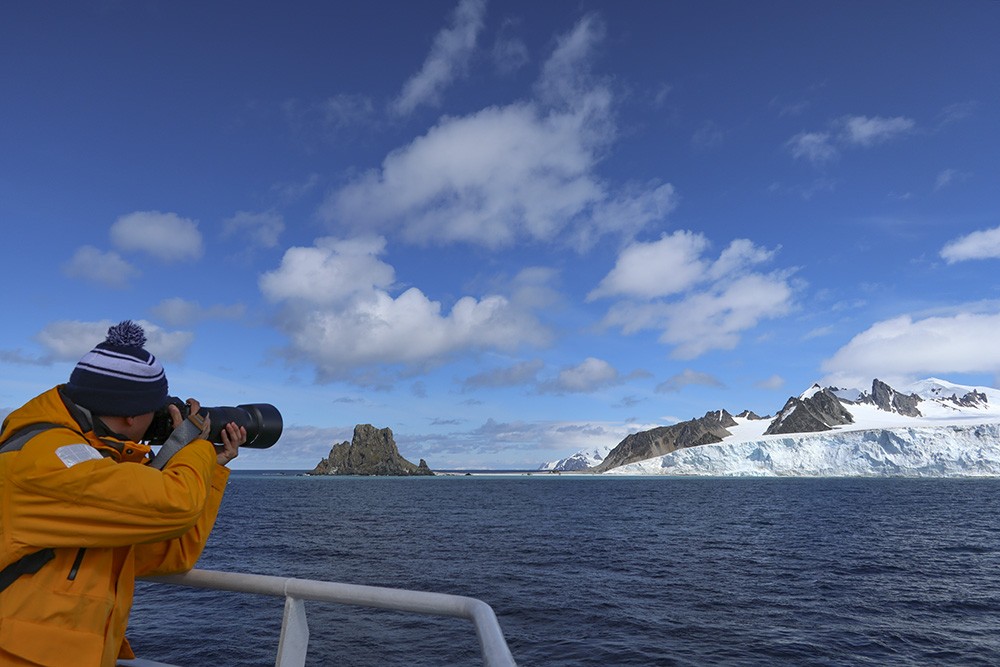
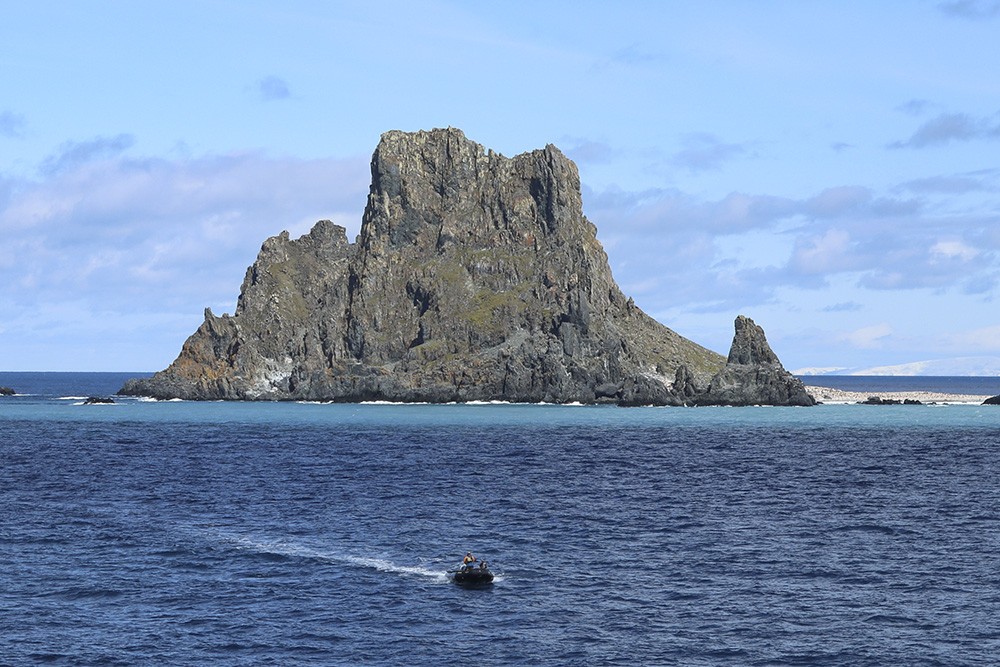
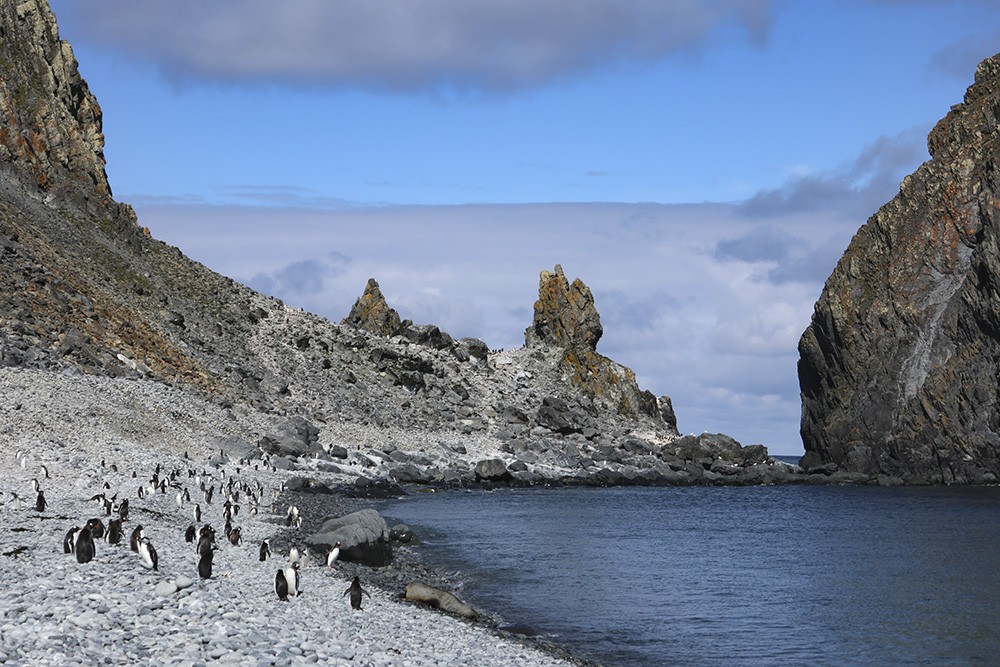
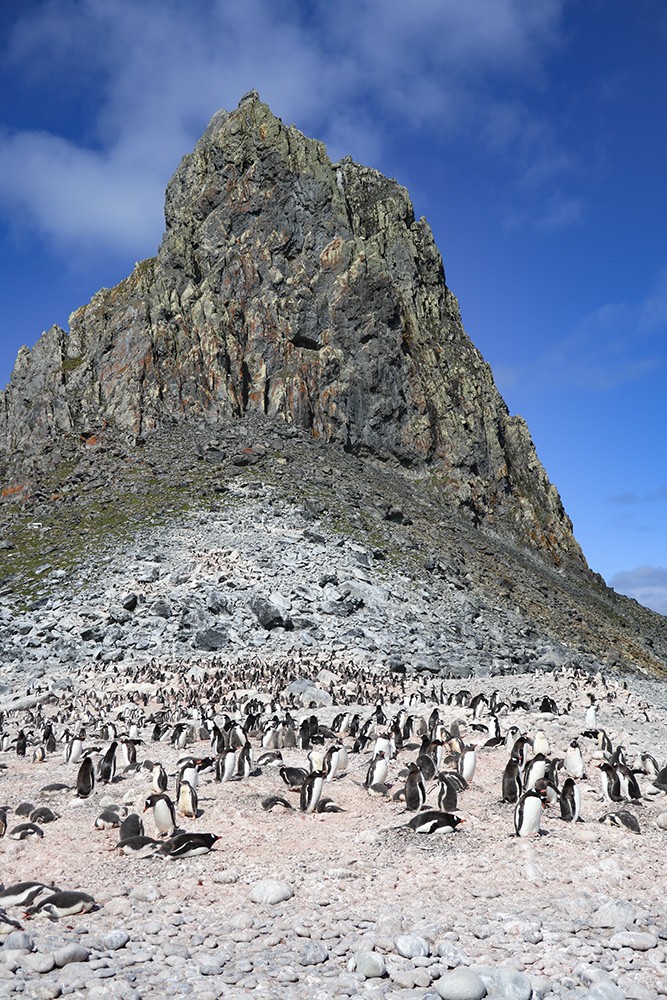
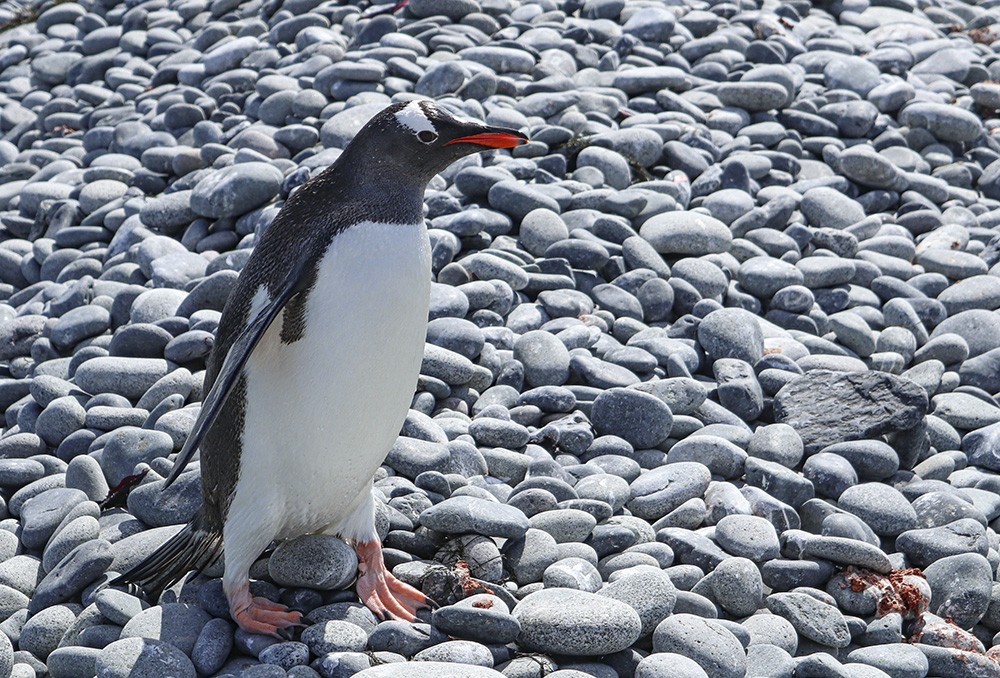
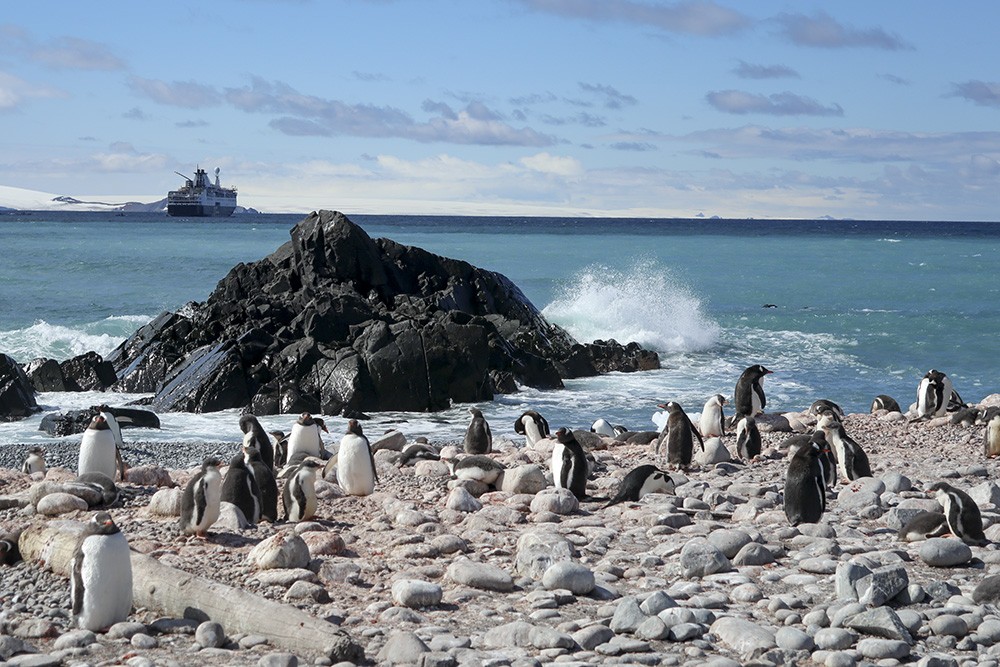
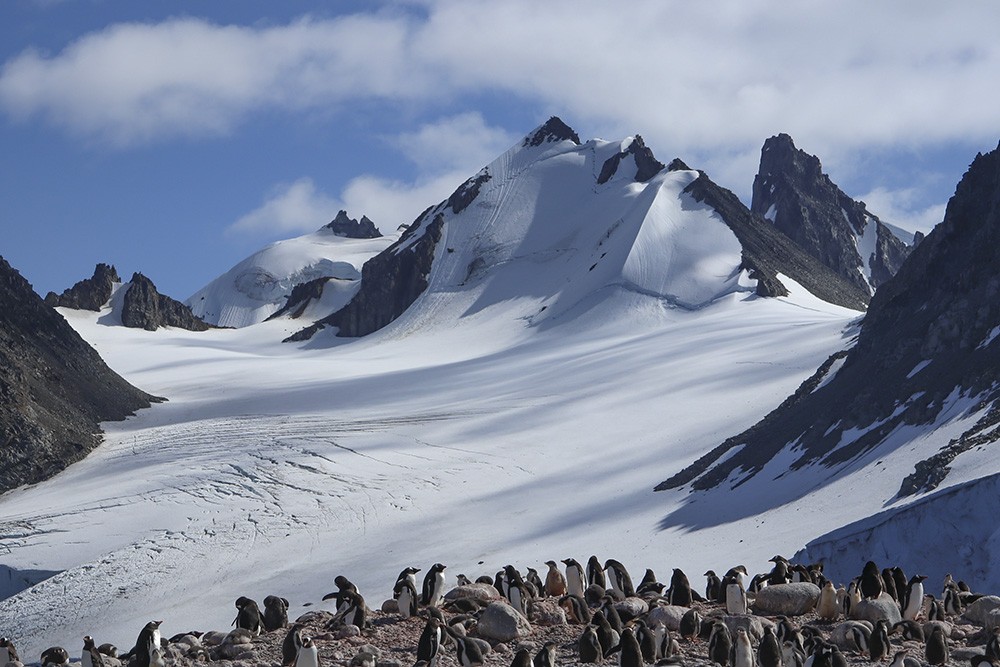
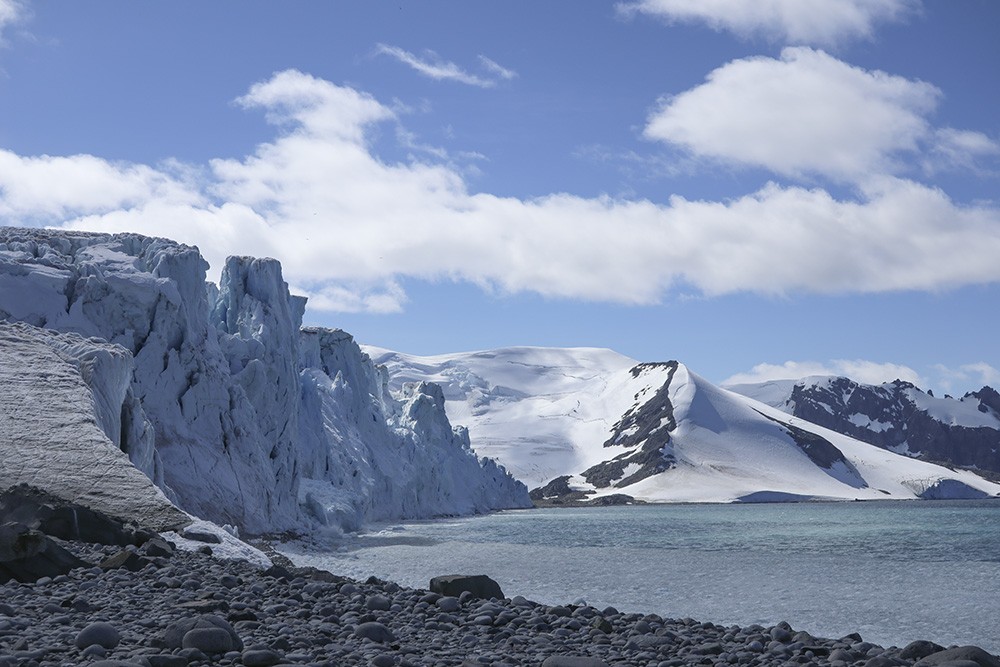
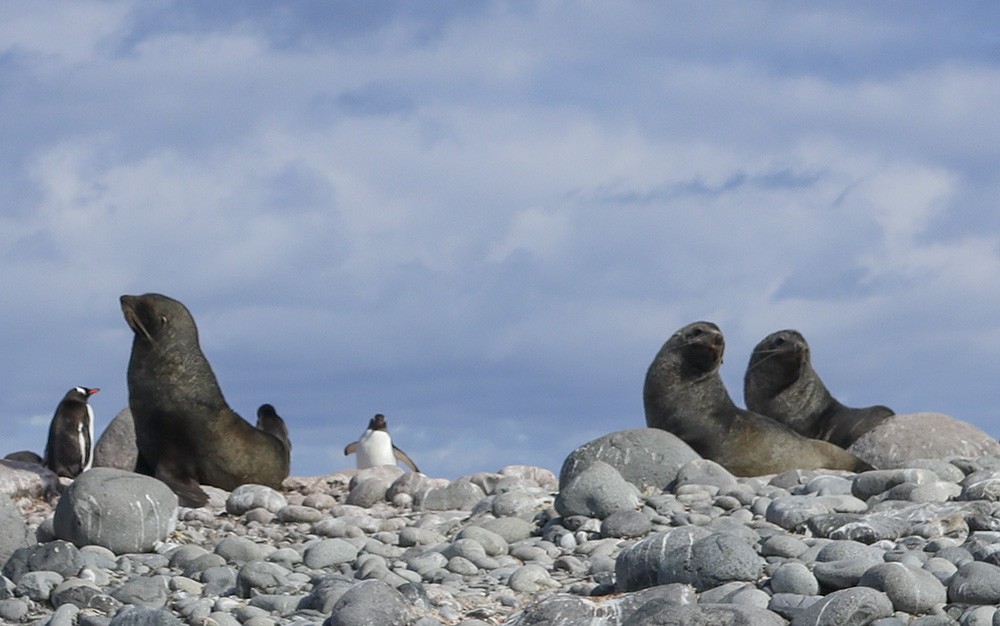
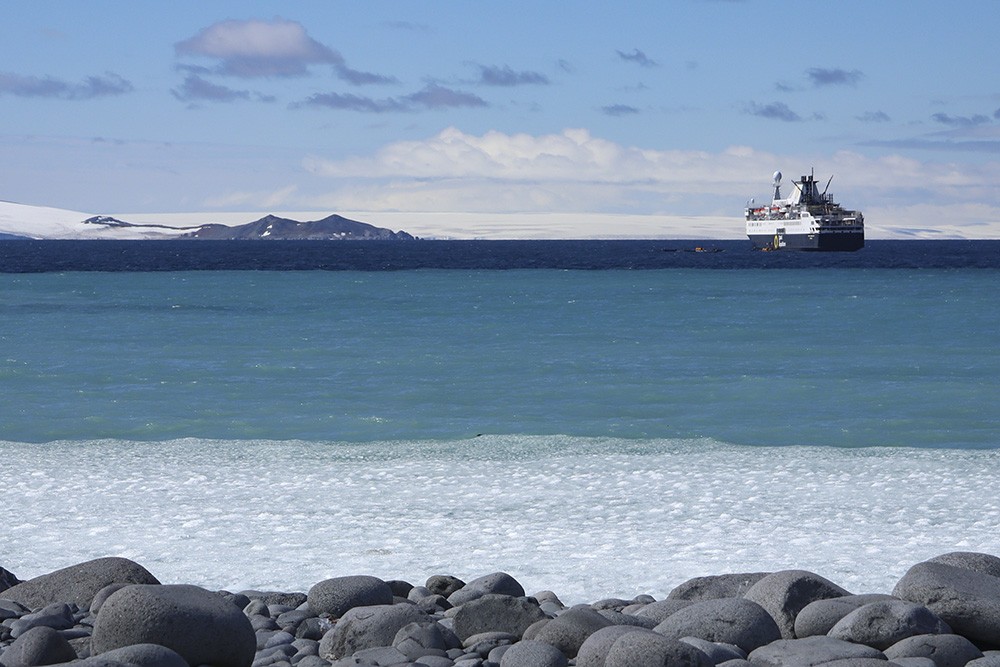
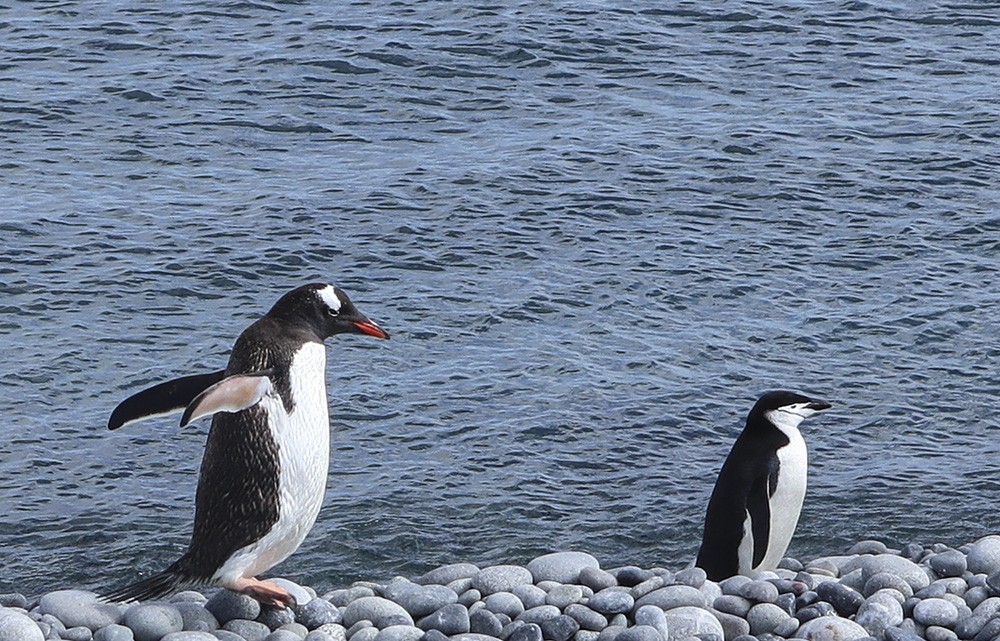
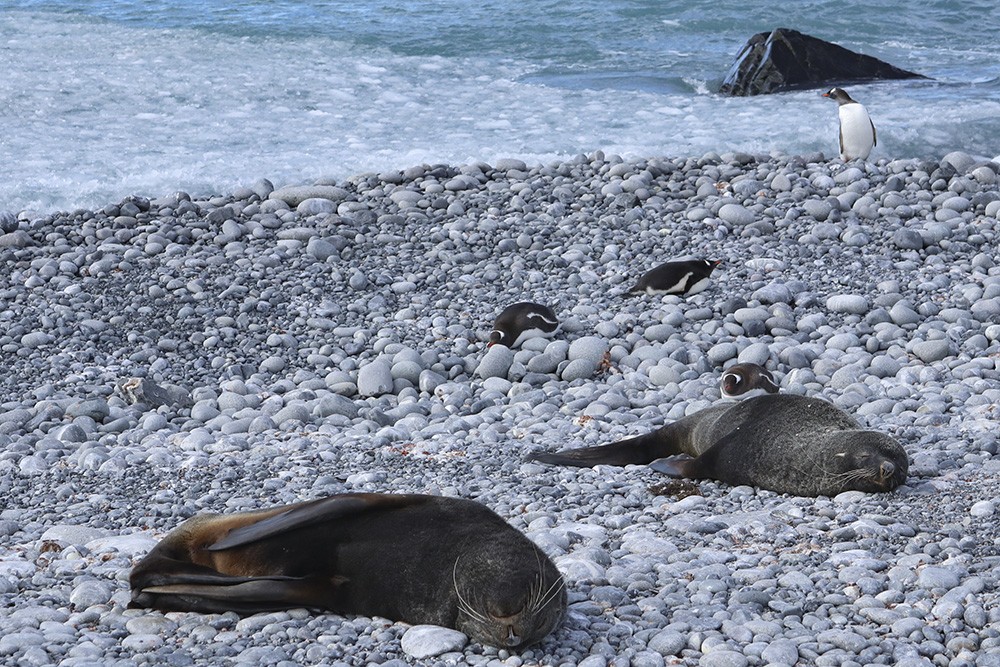
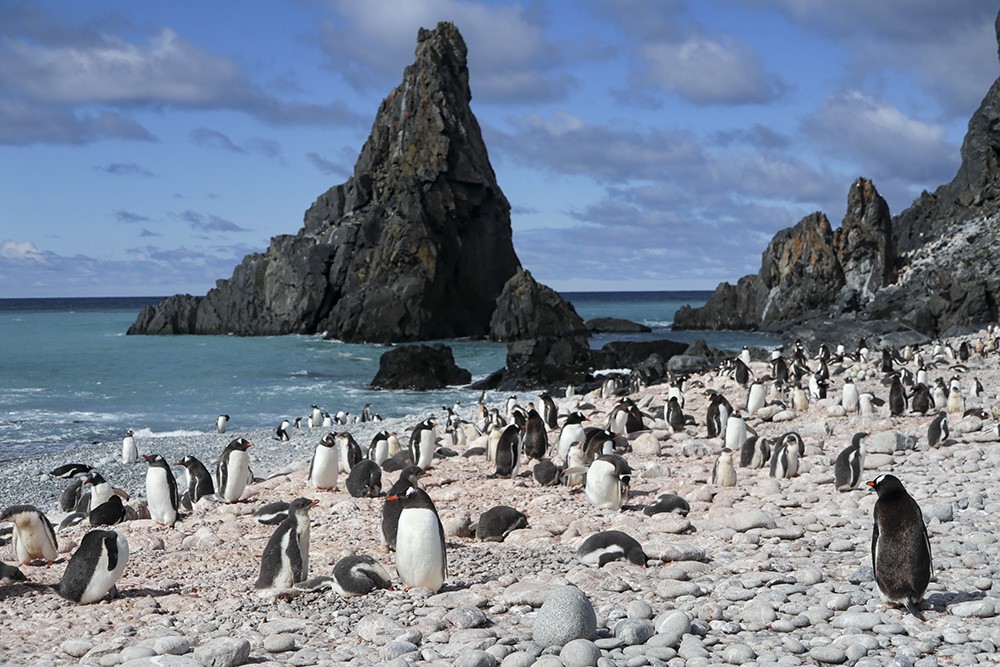
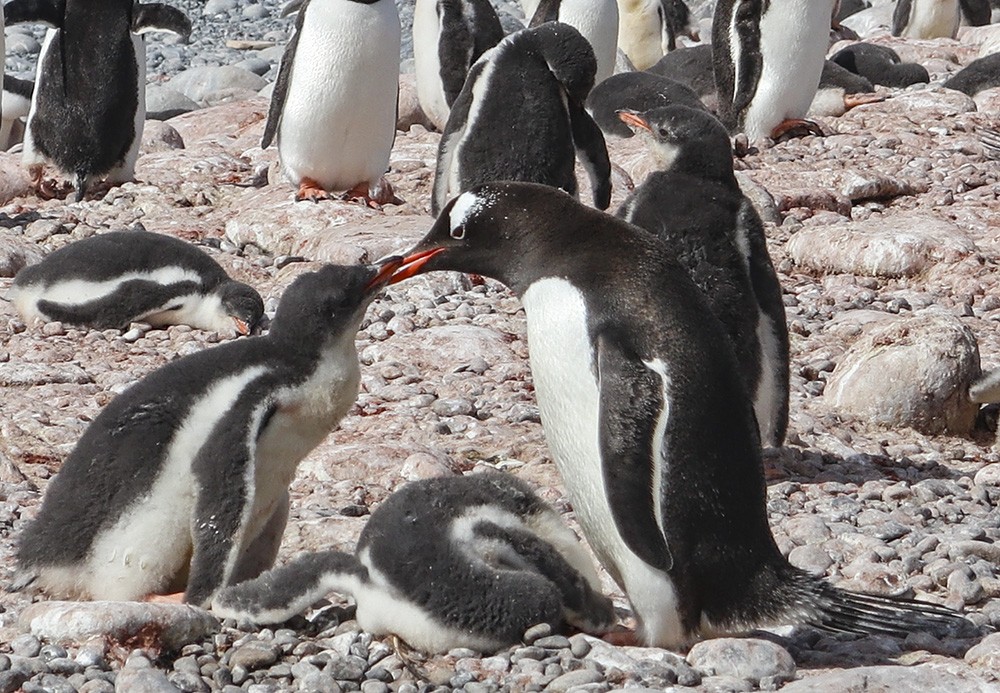
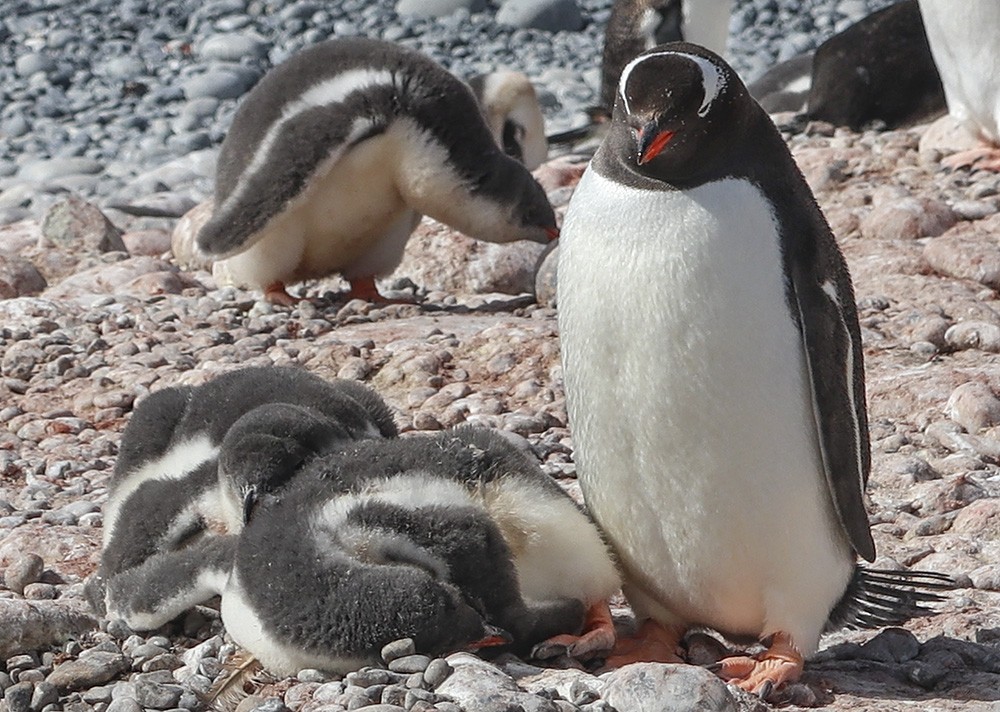
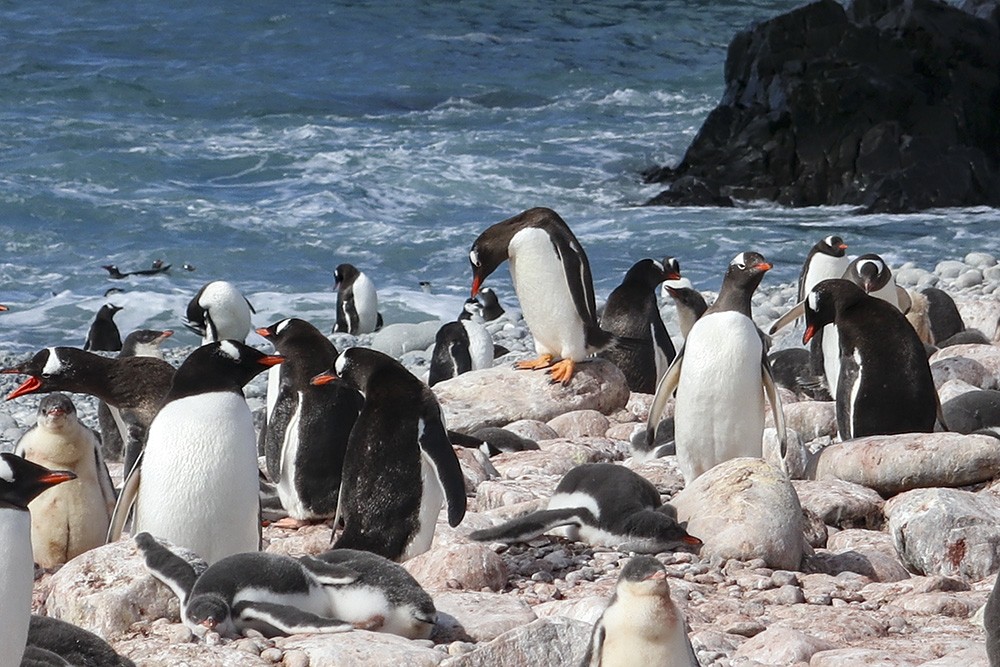
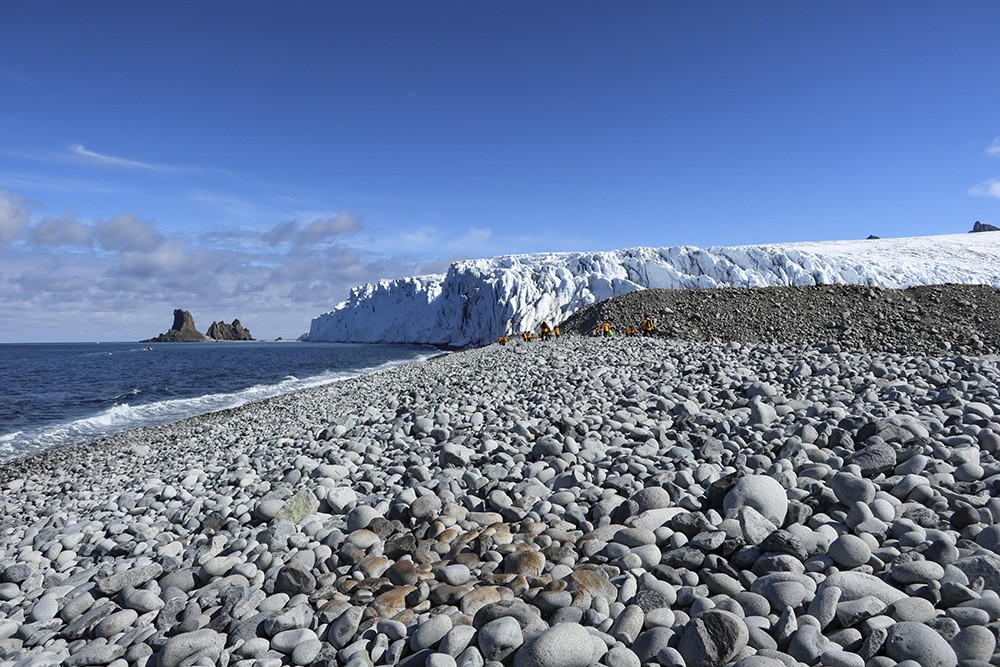
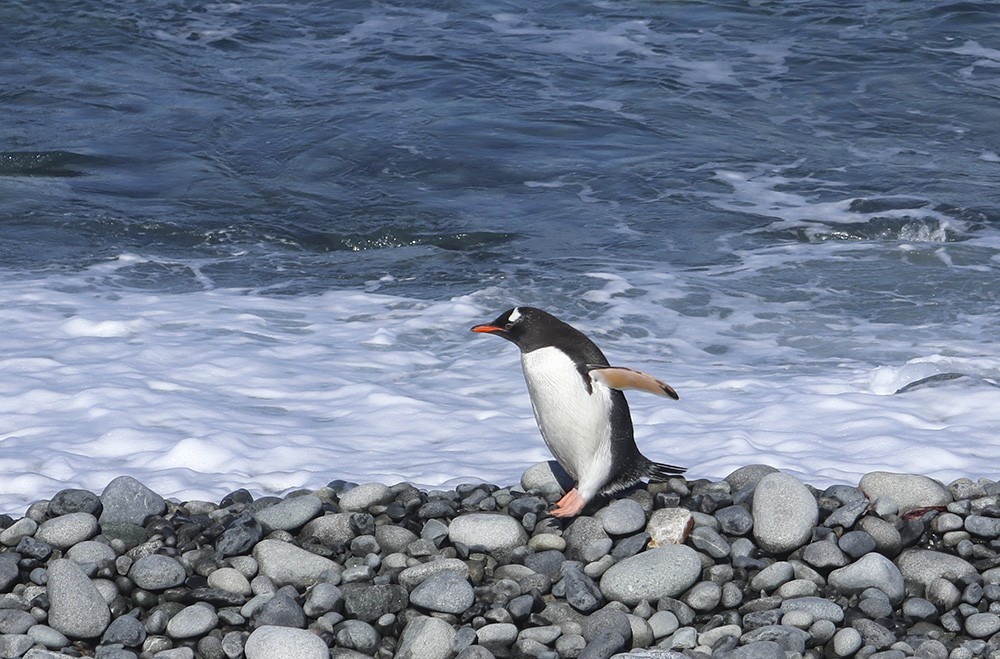
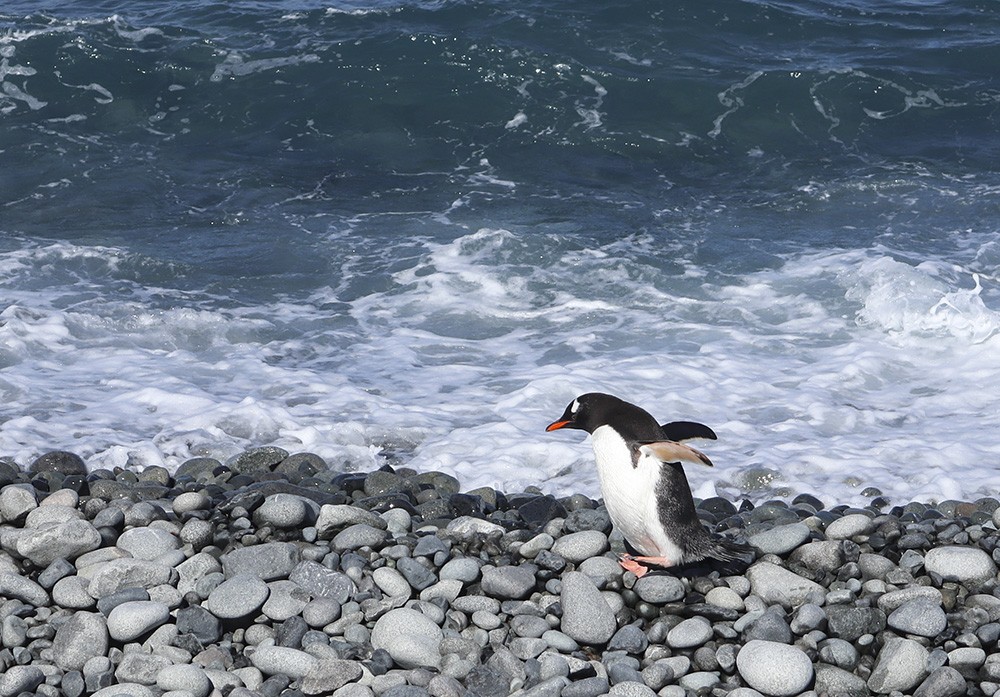
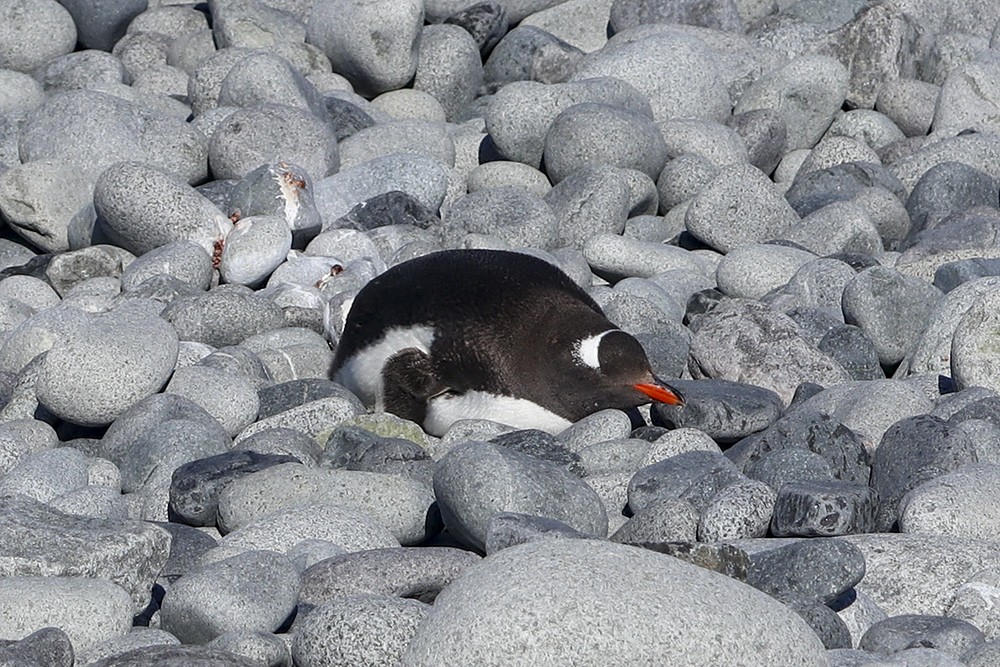
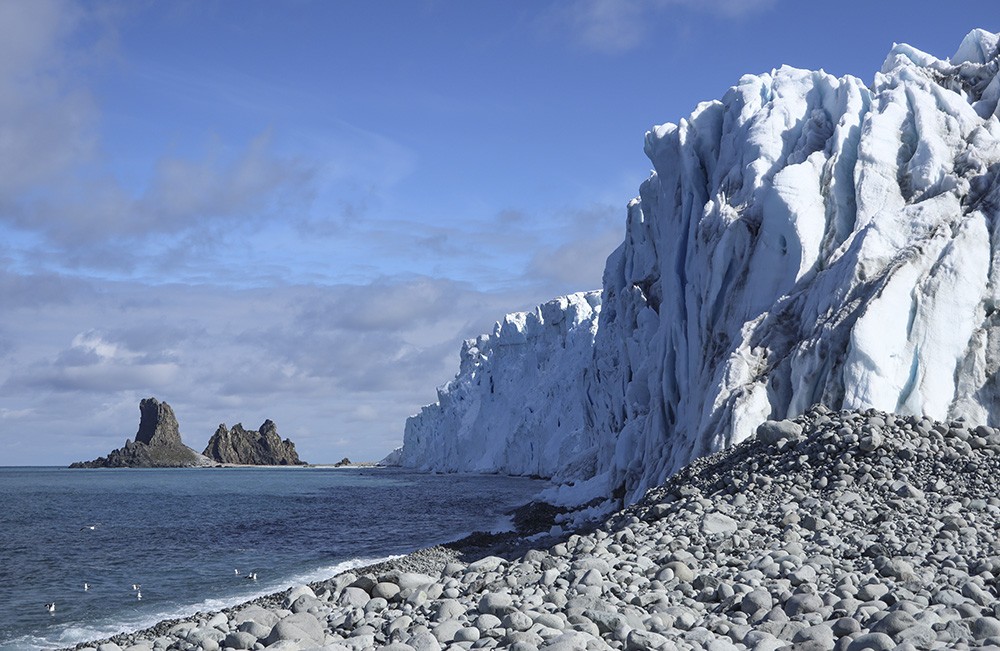
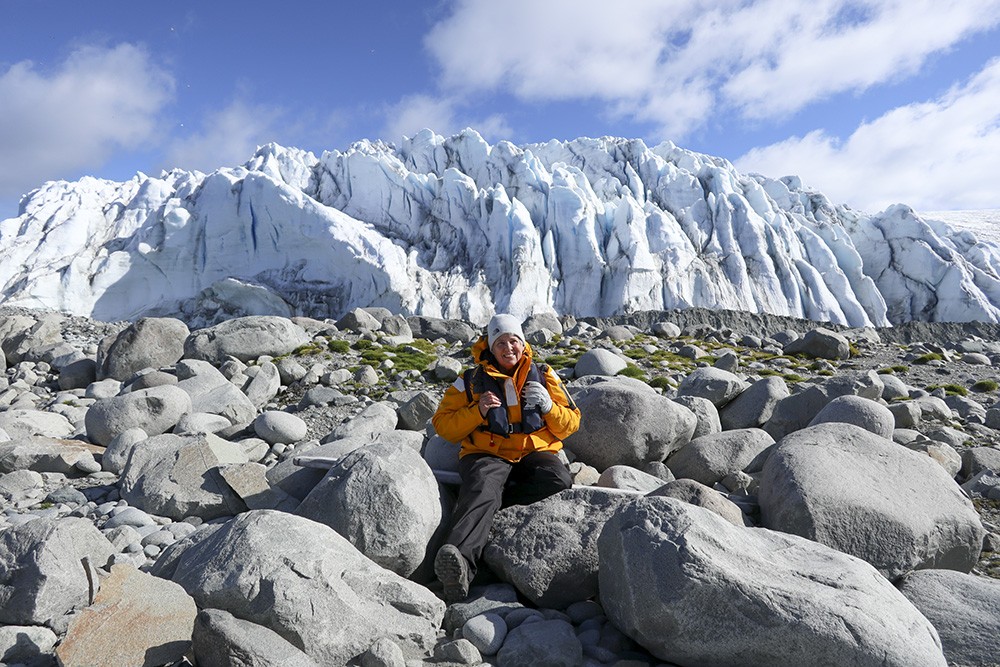
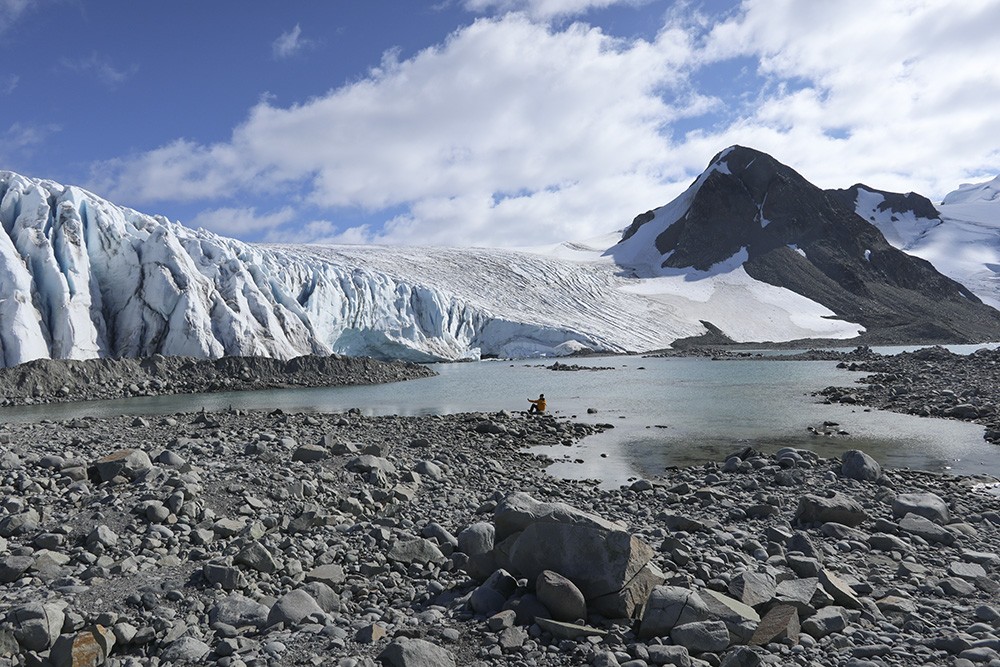
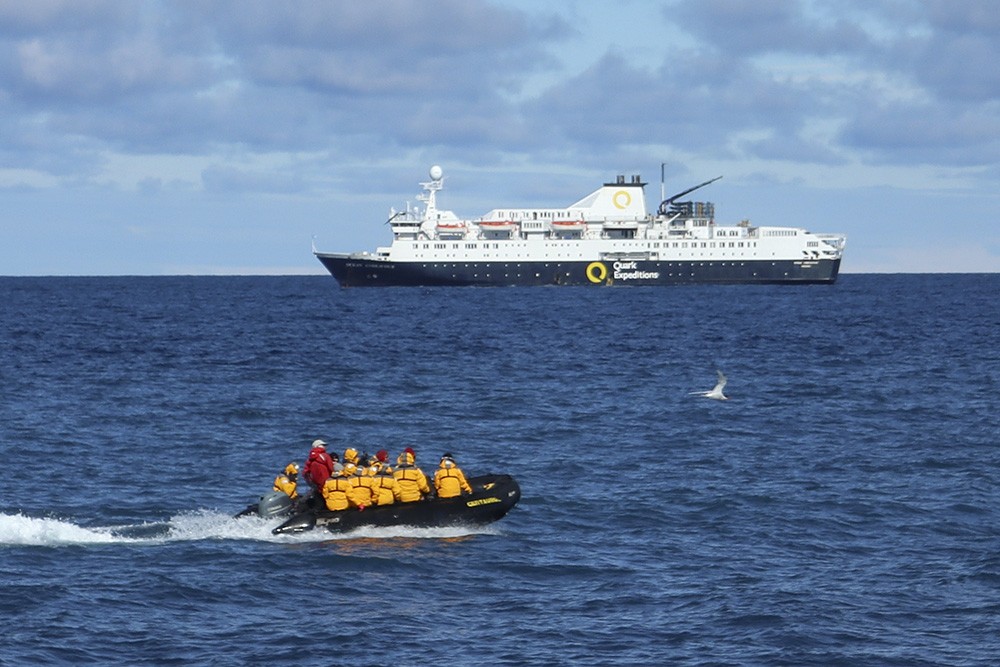
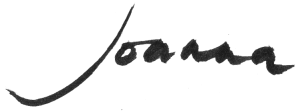
I’m glad you managed to stay warm amid all those beautiful penguins….. I’m really looking forward to the next blog and your photos of Antarctic Peninsula! Your photos and blog are as close as I’ll ever get to the Antarctic since I’m really allergic to the cold…. I’m even freezing here in Hawaii every a.m. til the sun does it’s job…..so hele on with the next episode!